By Patty Scheets, Vice President, Quality and Compliance
This article is also available to download as a PDF resource at the end of this article.
As of January 1, 2024, rehabilitation providers can bill caregiver training services (CTS) without the patient present when provided under an established, individualized, and patient-centered plan of care for a patient with a functional deficit. This is the first time CMS will allow therapists to bill and receive payment for services without the patient present. The new codes are based on a collaborative submission by the American Physical Therapy Association, the American Occupational Therapy Association, and the American Speech-Language-Hearing Association.
CMS defines caregivers as “an adult family member or other individual who has a significant relationship with, and who provides a broad range of assistance to, an individual with a chronic or other health condition, disability, or functional limitation” or “a family member, friend, or neighbor who provides unpaid assistance to a person with a chronic illness or disabling condition.” These codes do not apply for training medical professionals or support personnel who are employed to provide healthcare services to the patient.
CMS also notes the patient should agree to caregiver involvement and will require clinicians to document the patient’s or their representative’s specific consent for the caregiver(s) to receive training without the patient present.
The three new codes, and the official CPT descriptors, are:
97550: Caregiver training in strategies and techniques to facilitate the patient’s functional performance in the home or community (e.g., activities of daily living, instrumental ADLs, transfers, mobility, communication, swallowing, feeding, problem-solving, safety practices) without the patient present, face-to-face; initial 30 minutes.
97551: Caregiver training in strategies and techniques to facilitate the patient’s functional performance in the home or community (e.g., activities of daily living, instrumental ADLs, transfers, mobility, communication, swallowing, feeding, problem-solving, safety practices) without the patient present, face-to-face; each additional 15 minutes. List separately in addition to code for primary service 97750.
97552: Group caregiver training in strategies and techniques to facilitate the patient’s functional performance in the home or community (e.g., activities of daily living, instrumental ADLs, transfers, mobility, communication, swallowing, feeding, problem-solving, safety practices) without the patient present, face-to-face with multiple sets of caregivers. This is an untimed code which is billed once per patient represented, regardless of the number of caregivers in the session.
These codes follow the mid–point rule, that is, you must provide at least 16 minutes of caregiver training services to bill 97550. After the first 30 minutes accounted for by 97550, you must provide at least 8 minutes of additional training to bill 97551.
Examples include safe activity completion, problem solving, environmental adaptation, use of equipment or assistive device, or interventions focusing on motor, process, and communication skills.
Here’s an example of when these codes are appropriate:
97550-97551: A patient with cognitive impairment and impaired mobility with weight-bearing restrictions requires specific verbal and tactical cueing for successful and safe ambulation in the home and to adhere to the weight-bearing restriction. The therapist works with the patient while the caregiver observes. The caregiver expresses significant anxiety related to providing the required level of assistance correctly and needs to practice the ambulation strategy before attempting it with the patient.
The patient is easily agitated when the therapist engages with the caregiver, so the therapist determines it is important to schedule a session with the caregiver without the patient present to instruct the caregiver in the necessary techniques, respond to the caregiver’s questions, and allow the caregiver to perform return demonstration with the therapist before attempting the assistance with the patient.
The therapist spends 40 minutes with the caregiver performing training, evaluating return demonstration, and responding to the caregiver’s questions and concerns. Following this session, the therapist engages with the patient and caregiver together to assess the caregiver’s performance.
In this scenario, the therapist would bill one unit of 97550 and one unit of 97551, because they spent 40 minutes in caregiver training. They would use the appropriate existing codes for the additional time with the patient present.
97552: Four patients being treated in a clinic require limited assistance for ambulation with the use of an assistive device including verbal and physical cueing. All four patients share a goal of performing limited-assistance ambulation within the home setting so they can safely meet functional needs that require accessing bedroom, bathroom, kitchen, and dining areas. All of the patients present with difficulties processing and following multistep instructions and require the use of similar techniques for cueing and assistance.
The therapist determines that the caregivers representing these patients would benefit from peer support and peer-to-peer demonstration and feedback to acquire the skills they need. Caregivers for these four patients attend a group session for 45 minutes, during which the therapist provides training in safe management and positioning of the assistive device, delivering concise and one-step directive verbal cues, appropriate hand placement for physical assistance, and safety techniques for falls prevention.
In this scenario, the therapist would bill this service-based code four times — once for each patient whose caregiver(s) participated in the group intervention. This methodology is similar to the 97150-group intervention code currently in the therapy code set.
Some things to keep in mind as you use these new caregiver codes:
- CTS codes must be included in the plan of care.
- Patient/patient representative consent of CTS must be specific and documented in the medical record. General consent for treatment is not sufficient.
- Multiple sessions of CTS may be provided during an episode of care.
- CTS cannot be provided via telehealth.
- The standard for provision of caregiver training is to do so with the patient present. Deviation from this standard as evidenced by reporting these new codes should occur only when needed, and documentation must support the reason for this deviation.
- When providing training in the interest of a single patient, codes 97550 or 97551 should be reported based on time spent regardless of the number of caregivers present for the training.
- When providing training in the interest of more than one patient, code 97552 should be reported per patient represented, not per caregiver present.
- As with all care, this service must be provided with the consent of the patient or their legal representative, and the provider must adhere to HIPAA guidelines.
DOWNLOAD >> Caregiver Training Codes






